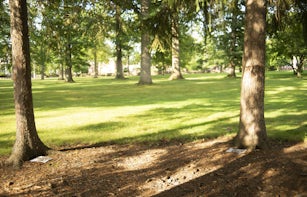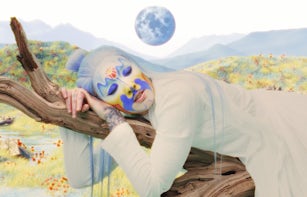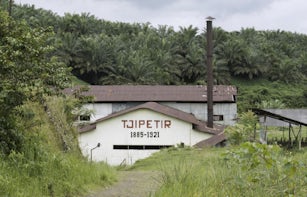
Rana El Nemer, an Egyptian artist living in Cairo, recently told me that she cannot even imagine what hope looks like. Considering the grim situation in Egypt since the 2013 military coup d’état this statement did not come as a surprise. She also told me that she had felt hope once. For a brief moment while driving the streets of Cairo in February 2011, shortly after the January 25 Revolution, she was able to imagine a place where she would just be, as herself; a place into which she was integrated into the (physical) space she was occupying. The backdrop to this overwhelming feeling was always, according to Rana, the tree-lined streets of Cairo, some pedestrians going about peacefully, a police station and some anti-police slogan graffitied on its wall.
I immediately understood. Living without hope, or not being able to imagine hope, is exactly how I lived during the Lebanese wars of 1975 to 1990. I also understand what it’s like to see something different. Not exactly hope, but something else: let’s call it a small possibility for a slightly different life. Sometime around 1992, when the state gathered the weapons of all the militias (except Hezbollah), and it became easy to move back and forth between the two Beiruts – East Beirut where I lived and West Beirut where my work was (Jad Tabet’s architecture office, on Hamra Street) – I discovered that Beirut is actually a city on the sea. When I was growing up in East Beirut we had no access to the sea; it was further north towards Jounieh and its private beach resorts. One day I finished work early, and, for no particular reason, I went walking, along Hamra Street and then down through Caracas Street. And there it was: the big blue in all its splendour. I had reached the famous Corniche Beirut, without even intending to. The weather was fine – not too cloudy, not too hot – and I stood there for hours watching the sun setting, the activity of the people around me, the movement of the water and the waves, the shoreline that stretched as far as my eyes could see, the port and the Lebanese mountains that form the perfect backdrop. The city was behind me, and in that moment I understood the history of Beirut, that it was the sea, the port and the mountains that shaped this city and gave it form. Its possible future, if any, had to be in the continuation of that history (and I had this crazy idea that the sole purpose of the wars was to destroy the connection between that history and this future). I don’t think I can call this feeling hope, though. Hope begins in the present and projects into the future; Beirut’s present then was as impervious to me then as it still is today, 25 years later. No, it was not hope. Rather, it was a beautiful feeling of being there, of simply existing, like the thousands or millions who stood exactly in the same spot, looked at the sea as I was looking, and understood that there are other worlds out there, both real and imagined, worlds that one can travel to in reality or in imagination. The sea is the possibility to escape this land, and the sea calls you to remain on it – to be born here and to die here, against one’s will.
But what is ‘hope’? Hope is everywhere, from the humble and mundane middle-class hope of social advancement, to the hope of slightly changing one’s life by drinking that beverage or buying that car, to the socialist promise of better tomorrows, of tomorrows that sing under the sun (‘des lendemains qui chantent sous le soleil’ as the song goes), to the religious dream of an a-temporal afterlife in various paradises. Everyone everywhere has hope in something, and it seems that capitalism is built on hope (or the illusion of it); in this way, ‘hope’ is the ideal commodity, the one that helps sell all the others.
And from where does this ‘hope’ come? Is it fundamentally linked to human existence, or is it historically specific? In the Qur’anic account of the fall of Ibl-ls, God asks all the angels in his presence to prostrate themselves before Adam, the first human, formed out of mud. Ibl-ls refuses to do so: some say out of pride, because he was created from fire while Adam was created from mud; some say it is because he was not actually an angel but a jinn, and his jinn-nature overtook him and pushed him towards disobedience. But the most interesting interpretations of this story came from certain Sufis (like Mansour al-Hallaj), who viewed his refusal to prostrate himself not as an act of rebellion, but an act of ultimate love: Ibl-ls was in the presence of God; he lived in an eternal present in the blissful light of God; prostrating to Adam meant that he would lose God from his sight: ‘But I love you so much’, he said, ‘and I cannot bear not having you in my sight, even if only for a fraction of a second’. This refusal, whether motivated by love or pride, was seen as disobedience by God, who banished Ibl-ls from his presence. The moment of banishment brought despair (‘I am no longer in the presence of God’), nostalgia (‘How good it was to be in the presence of God’), and hope (‘Someday, I will once again be in the presence of God’, at the End of Days, when Ibl-ls’s role as a tempter will end). The moment of banishment was, simultaneously, the moment when human time began, and the triad of despair, nostalgia and hope is also shared by Adam after his fall. In that sense, if hope is concomitant with human existence, then so are despair and nostalgia; these three come together, and one cannot be imagined without the other two.
Consequently, a life without hope is not exactly a life of hopelessness. Anna Blume, the hero of Paul Auster’s novel In the Country of Last Things, discovered that a life without hope was the only life possible in the place in which she was stranded: ‘But when hope disappears, when you find that you have given up hoping even for the possibility of hope, you tend to fill the empty spaces with dreams, little childlike thoughts and stories to keep yourself going.’ 01 Fabien, the main character in Antoine de Saint-Exupéry’s novel Night Flight, is a pilot trying to navigate his plane; at some point, he knows that his death is imminent. The moment he abandons all hope and stops trying to survive is one of illumination:
And now a wonder seized him; dazzled by that brightness, he had to keep his eyes closed for some seconds. He had never dreamt the night-clouds could dazzle thus. But the full moon and all the constellations were changing them to waves of light. … Now all grew luminous, his hands, his clothes, the wings, and Fabien thought that he was in a limbo of strange magic; for the light did not come down from the stars but welled up from below, from all that snowy whiteness. 02
Here, abandoning hope coincides with a reversal in the direction of light, suddenly ‘below him … thridded with squalls and cloudbursts and lightnings’, and not from a single source but from everywhere including himself. 03 This is an inversion of the dominant symbolic order of the world, in which light comes from above, penetrating the earth to help plants grow and make life possible.
Hope became intrinsically linked to the idea of the single source of light shining on the world, as the light at the end of the tunnel, the sun shining through the clouds after rainy days, the dawn of a new day and so on. It seems that ‘hope’ and ‘light’ are interchangeable on a symbolic level, within clusters of metaphors that form very powerful allegories: sun, light, day, life, fire, freedom, hope, good – and their antitheses – night, darkness, death, water (or earth), ‘the weight of the world’, despair, evil. These clusters of metaphors are not stable – they don’t operate rationally but rather through affinity, with certain elements ‘naturally’ belonging together. For instance, one can say ‘the fire of freedom’ and be perfectly understood, while ‘the water of freedom’ will only bring confusion (note that Fabien’s freedom from the weight of the world comes not from the light and warmth of the sun but from the icy nature of water, illuminated by the moon and the stars).
Again: was this light-hope connection always there, or did it start at a particular point in human history? The way humans lived in the Palaeolithic, pre-agricultural period is significantly different from the post-agricultural, Neolithic way of life. Palaeolithic humans existed in hunter-gatherer nomadic groups or tribes, but following the development of agriculture, human society became sedentary, working the land and living off it. The technological shift affecting tools was accompanied with a symbolic shift affecting light and its place in human metaphorical systems. In the Palaeolithic, humans lived mostly in caves and their activity was generally a nocturnal one. For this way of life, we may imagine, the sun’s warmth penetrating a life-sprouting earth would hold little symbolic importance; the light of the moon would hold more significance, watching over the hunters and the gatherers going about their activities at night. Inside the caves the limits between day and night, light and darkness, were not clear; the distinctions between waters and dry land unpredictable; time inside the caves flowed differently, unpunctuated by the succession of day and night or the changing of the seasons.




